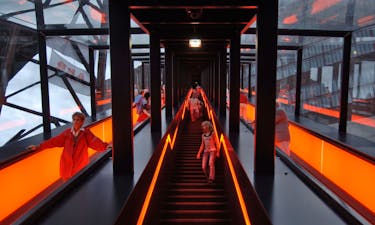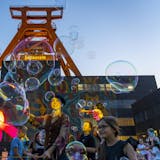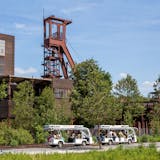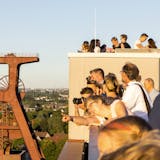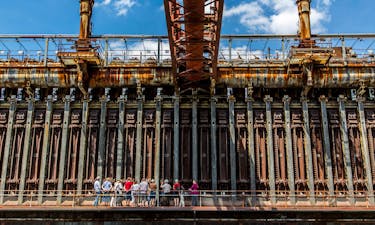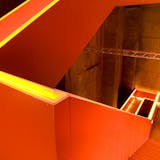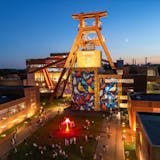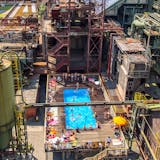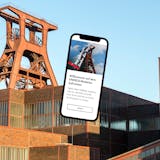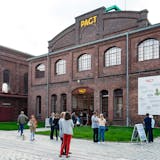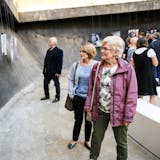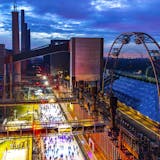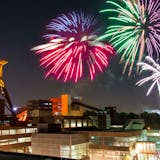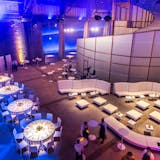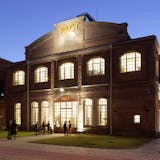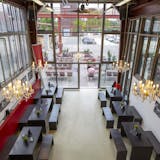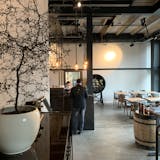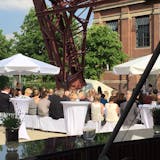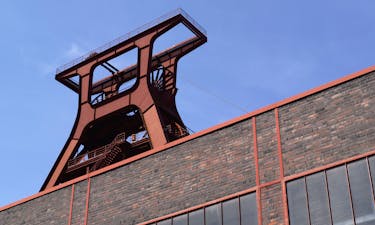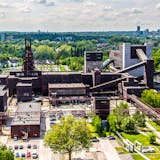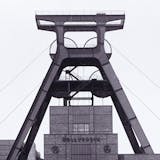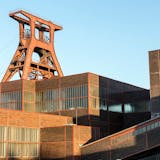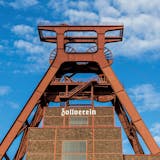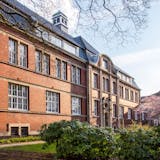
PACT Zollverein
PACT Zollverein
In den Diskussionen um die moderne Stadt nimmt das Schlagwort Quartiersentwicklung einen wichtigen Platz ein. Sehr einfach gesagt, geht es darum, wie Kulturschaffende marode Stadtviertel für sich entdecken und mit der Gründung von Ateliers, Clubs oder freien Bühnen den Anfang machen für neues Leben im Bezirk. Wenn es auch kein Stadtteil war, sondern für Werksfremde eine „verbotene Stadt“, lockte Zollverein bald nach Schließung Künstlerinnen und Künstler an. Bereits Ende der 1980er Jahre wurde die freie Tanzszene aktiv in der Waschkaue der Schachtanlage 1/2/8. Als Zeche Zollverein in den 1920er Jahren nicht nur neu gebaut, sondern auch neu erdacht wurde, stand auf Schacht XII die Förderung der Kohle im Mittelpunkt. Die Bergleute fuhren an anderen Standorten ein. Etwa auf der älteren Schachtanlage 1/2/8. Hier konnten sich in der Waschkaue seit 1906 bis zu 3000 Kumpel waschen und ihre Kleidung in Gitterkörben an die Kauendecke ziehen. Die Versuche der Tanzszene, auf dem alten Schacht 1/2/8 Tritt zu fassen, waren besonders erfolgreich und nachhaltig. 1999 wurde die historische Waschkaue zum Choreographischen Zentrum mit zwei Bühnen, Übungsräumen, Bar und Kantine hergerichtet. Eine Sanierung mit sehr viel Feingefühl, sowohl Gitterkörbe als auch historische Seifenschalen blieben teilweise erhalten.
PACT Zollverein
The slogan “neighborhood development” plays an important role in the discussions about the modern city. In very simple terms, it is about how creative artists discover run-down districts for themselves and start new life in the district by setting up studios, clubs, or independent stages. Even though it was not a city district itself, but for outsiders a “no-go-area”, Zollverein attracted artists soon after its closure. Already at the end of the 1980s, the independent dance scene was active in the washrooms in the shaft facilities 1/2/8. When Zollverein Coal Mine Industrial Complex was not only rebuilt in the 1920s but also redesigned, the focus was on the extraction of coal at Shaft XII. The miners went to other locations. For example, at the older Shaft 1/2/8, whereas up to 1906 as many as 3,000 miners have been able to wash themselves in the washrooms and pull their clothes up to the roof of the mine in mesh baskets. The attempts of the dance scene to gain a foothold at the old Shaft 1/2/8 were particularly successful and sustainable. In 1999, the historic washroom was converted into a choreographic center with two stages, rehearsal rooms, a bar, and a canteen. The renovation was done with a great deal of sensitivity. Both the mesh baskets and historic soap dishes were partially preserved.


